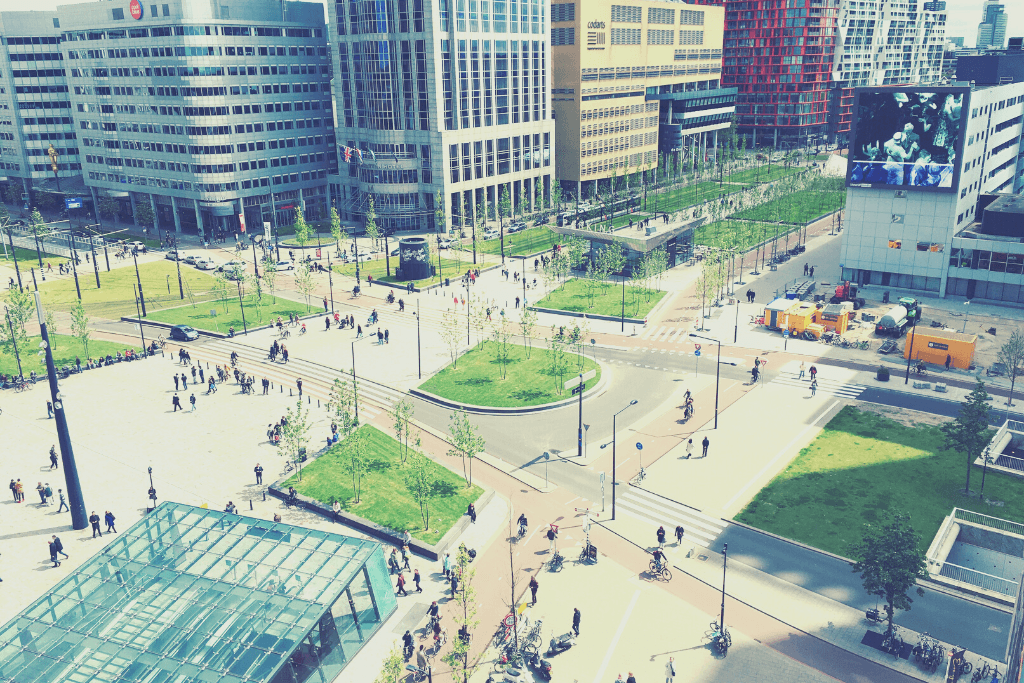Throughout history, diseases and pandemics always had a tendency to shape and inform the development of our built environment – and the COVID-19 pandemic was no exception. As the lockdowns forced millions of city dwellers worldwide to adapt to a hyper-local life for months at a time, an increasing number of urbanists started to understand the importance of accessibility and walkability of urban centers.
There was one particular concept that Anne Hidalgo, mayor of Paris, successfully used in her 2020 re-election campaign that resonated globally: Hidalgo proposed to create “fifteen-minute cities” in Paris to “cut pollution and stress”.
Since then, other major cities including New York, Melbourne, Seoul, Bogota, and many more, unveiled similar plans.
But as this concept keeps gaining political and social momentum, what exactly is a fifteen-minute city?
What’s a Fifteen-Minute City?

A fifteen-minute city is an dense urban area in which a resident can fulfil most of their needs within an area that’s reachable in fifteen minutes either by walking, cycling, or using public transportation.
Even though the term “fifteen-minute city” was officially coined and developed by the French-Colombian scientist Carlos Moreno to tackle car hegemony and enhance urban sustainability in 2016, the concept isn’t novel. It was first introduced in the 1920s in the USA by the urban planner Clarence Perry as a part of the new urbanism theory, which wanted to create more walkable cities.
Nevertheless, in the following decades, most of the world’s urban development took place in tandem with the skyrocketing growth of the car ownership. As a result, most modern cities are comprised of disconnected “zones” for different activities and needs such as commercial, residential, public, or industrial. This can mean long travel distances, social issues such as affordable housing, and a high environmental impact.
As cities around the world are seeking new ways of promoting livability and climate change resiliency, a century after the first conversations about it, “fifteen-minute cities” are back on the urban planners’ agenda again.
What Are Benefits of Fifteen-Minute Cities?

While a fifteen-minute city might not be a universal solution for urban livability everywhere, the concept offers a plethora of attractive benefits to communities that can make it a reality.
The most obvious advantages of fifteen-minute cities are environmental ones: Thanks to the reduced energy and transportation needs, fifteen-minute cities can drastically cut carbon emissions and pollution.
Walkability and cyclability also promotes social equity, as they’d allow residents without cars also access public services and amenities, as well as educational, professional, and cultural opportunities. Especially at a time when lack of physical inactivity is a health crisis by its own right, human-powered transport can boost health and well-being for everyone. Likewise, a sense of a tight-knit and highly engaged community can fight loneliness and isolation – which are a part of city life for so many.
There’s no doubt that the time and hassle saved thanks to the convenience of living in a fifteen-minute city can help us to put our time and effort into what matters, and empower us to collectively work on creating a better future for ourselves and our planet.








